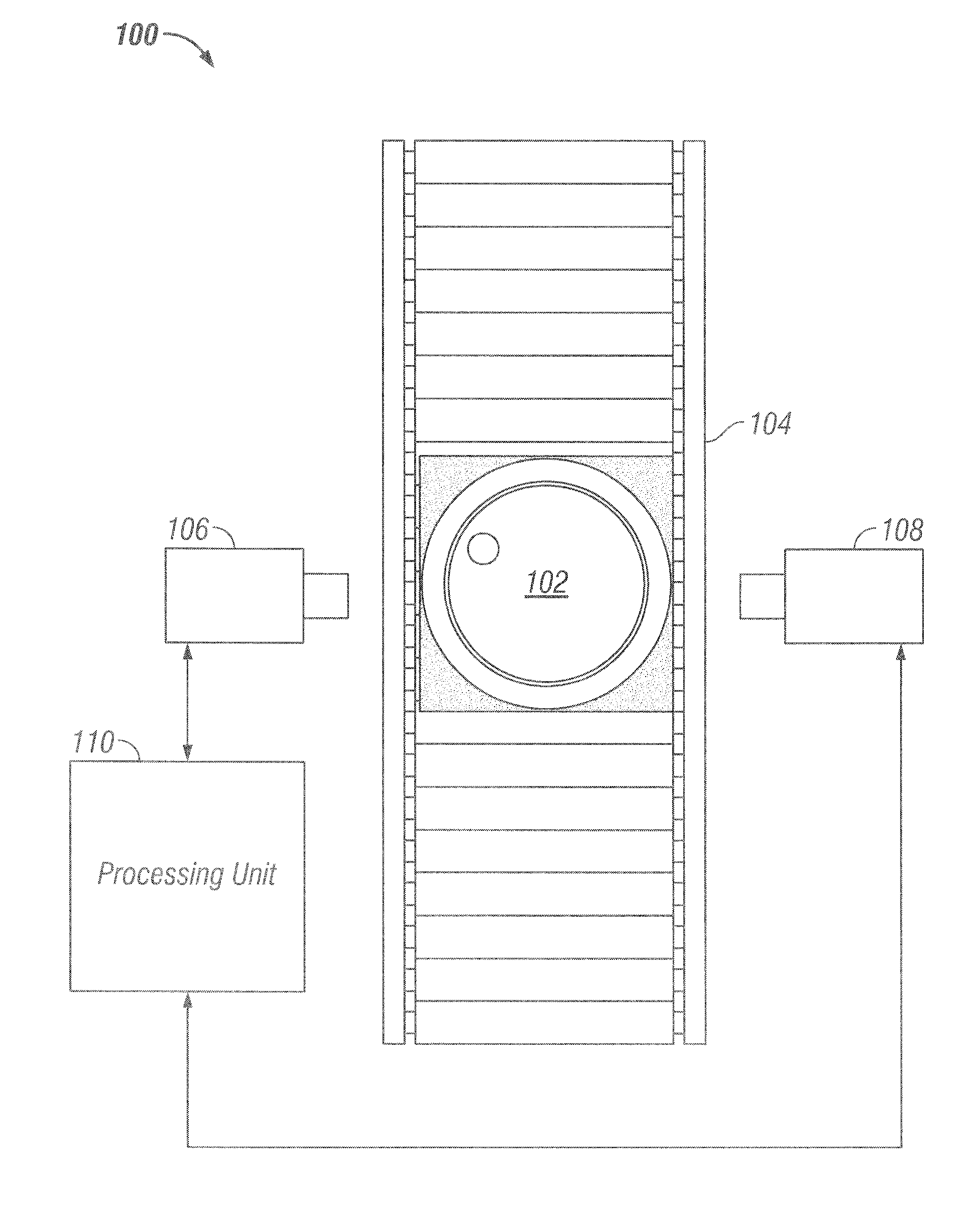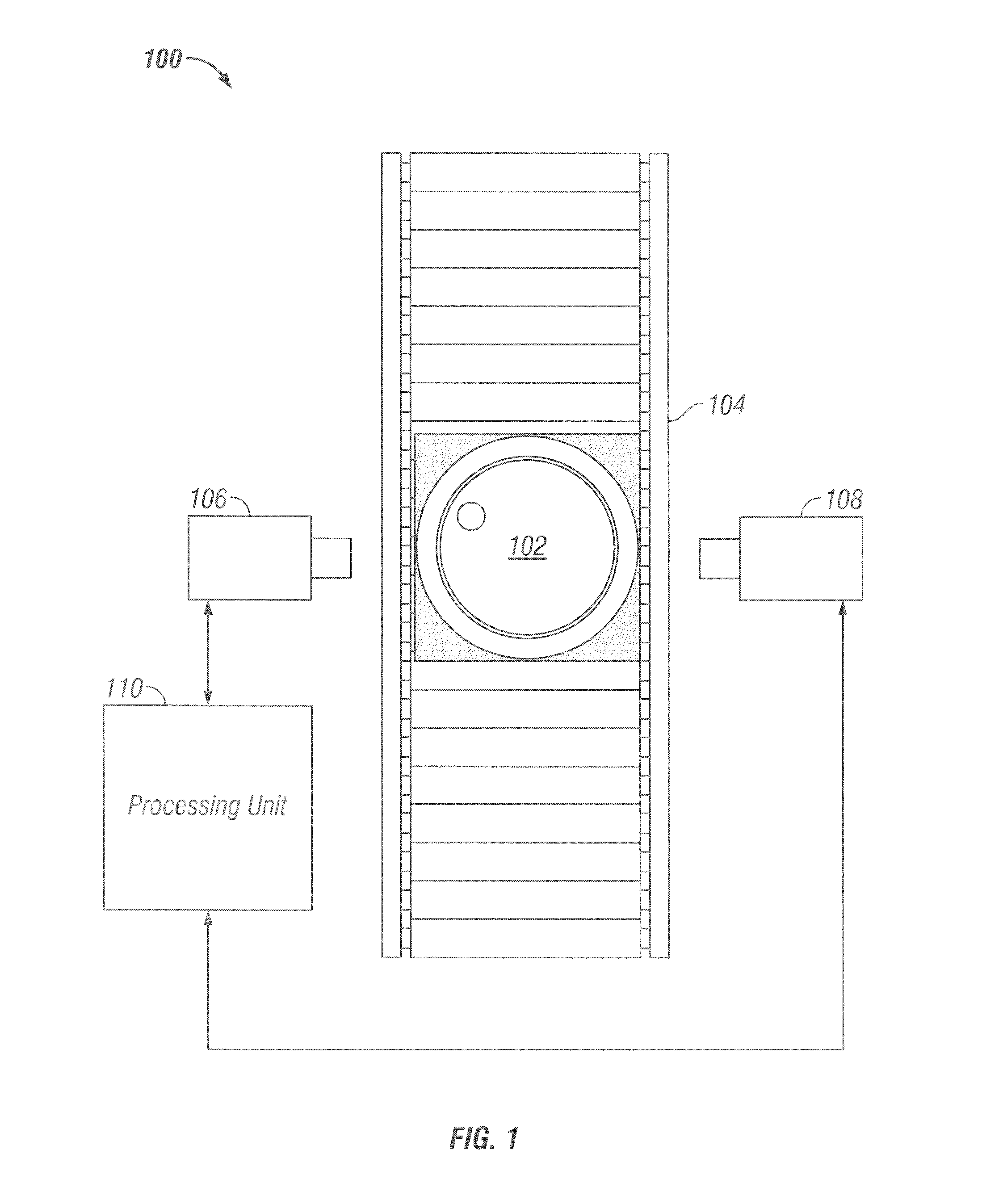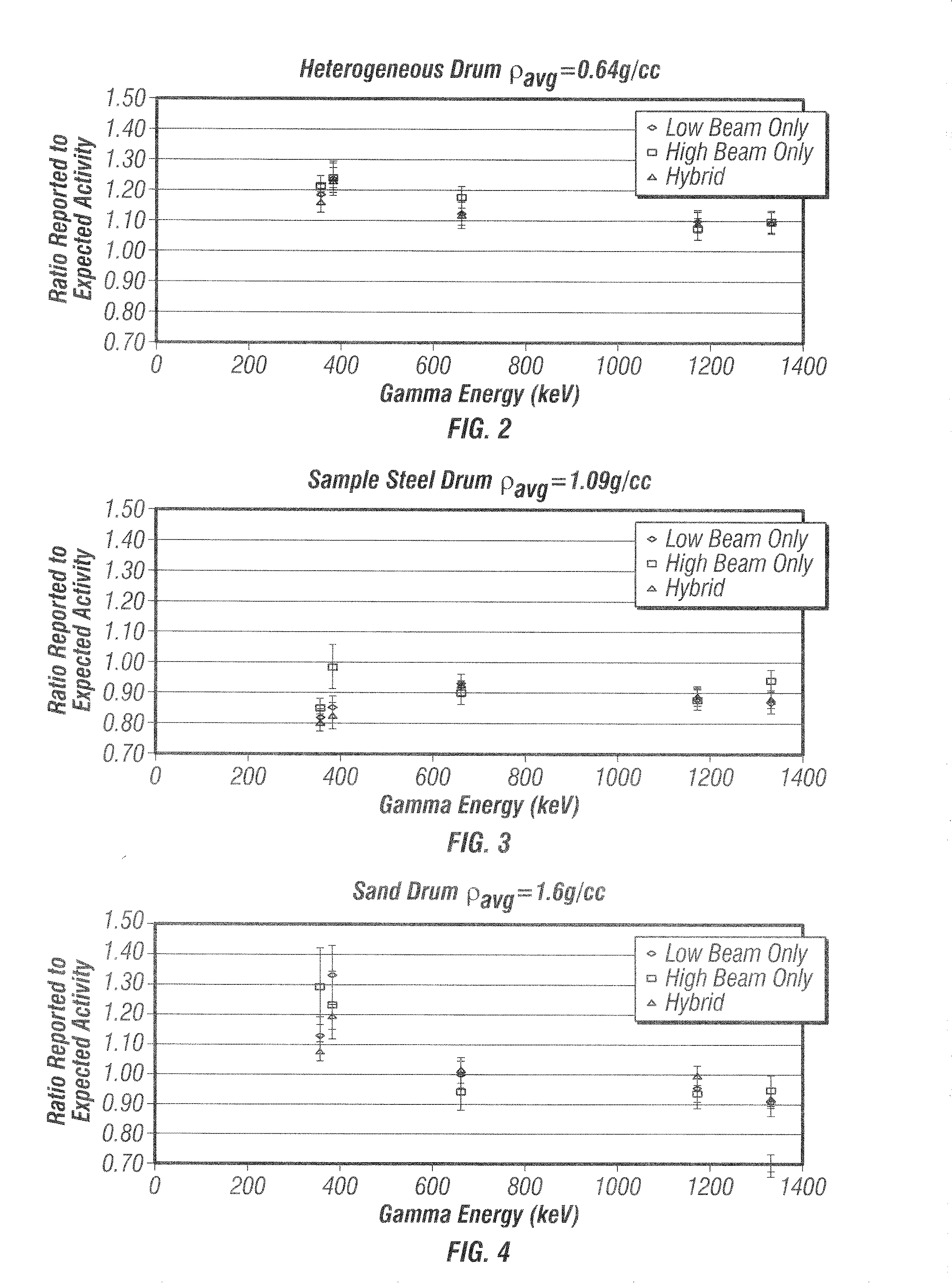Extending the Dynamic Range of the TGS Through the Use of a Dual Intensity Transmission Beam
- Summary
- Abstract
- Description
- Claims
- Application Information
AI Technical Summary
Benefits of technology
Problems solved by technology
Method used
Image
Examples
Embodiment Construction
[0026] Obtaining a high quality attenuation map is a prerequisite to obtaining an accurate tomographic gamma scanner (TGS) assay. For highly attenuating items, counting precision is a limiting factor for some views. The dynamic range can be extended by using a strong, high-energy source in conjunction with a beam modulator allowing high and low transmission modes. For modest attenuation, the weak or low beam intensity is used to obtain transmission factors. When count rates are too low to be viable, the system automatically uses the high beam data. Ordinarily, the high beam would saturate the detector due to excessive dead-time and pile up; hence, the transmission data from the high beam cannot be used throughout the range.
Implementation
[0027]FIG. 1 depicts a basic block diagram 100 of the invention in its present embodiment. In a typical automated production environment, a drum containing a heterogeneous distribution of radioactive waste 102 passes before the tomographic gamma s...
PUM
 Login to View More
Login to View More Abstract
Description
Claims
Application Information
 Login to View More
Login to View More - R&D
- Intellectual Property
- Life Sciences
- Materials
- Tech Scout
- Unparalleled Data Quality
- Higher Quality Content
- 60% Fewer Hallucinations
Browse by: Latest US Patents, China's latest patents, Technical Efficacy Thesaurus, Application Domain, Technology Topic, Popular Technical Reports.
© 2025 PatSnap. All rights reserved.Legal|Privacy policy|Modern Slavery Act Transparency Statement|Sitemap|About US| Contact US: help@patsnap.com



